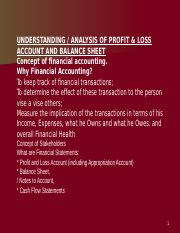
Journal accounts are used in bookkeeping to track cash transactions. The journal entries should contain information such as the date of the transaction and account description. Many companies assign a unique reference number to each transaction, so they are easy to find in other financial processes. Journal accounts are not necessary for all organizations. Some organizations prefer to have one account that has only one entry, while others choose to keep two.
Double-entry bookkeeping
Double-entry accounting uses credit and debit to record transactions. Each transaction affects either one or both accounts differently. For example, selling an item will deduct money from the inventory account, while receiving a payment will credit the cash account. Balance should be achieved between debits and credits, where the sum of all debits must equal the sum of credit.
Double-entry accounting can be used to track money and create financial statements that will help business owners make better decisions. This accounting method reduces mistakes in bookkeeping and adds transparency to company finances. While some businesses still use manual bookskeeping methods, most businesses use accounting software.
Entry compound
Accounting can use compound entry. These types are useful for summing up data and saving time. However, they can be difficult to perform correctly. You need to follow a few guidelines to avoid making mistakes. Let's look at the steps involved in compound entry into journal accounts.

A compound account is an entry that affects more accounts than one. It is different from a simple journal entry in that it is more complicated and can include a number of credits and debits. You can also call this a reversing journal entry. These types of entries are often made at the beginning of a new accounting period to clarify bookkeeping. They reverse previous period's adjusting entries.
Adjusting entries
Journal entries must be adjusted if a transaction that was recorded in accounting records is for a time beyond the current accounting period. For example, a company may pay an insurance agent $2,400 on December 1, 2021. This transaction is six months worth of coverage. However, coverage will cease after December 31. To correct this error, an adjusting entry is required.
Adjusting entries serve to correct the income statement, balance sheet, or balance sheet. An adjusting entry is usually a division of income and expenses over the current period. This can be done in three steps. The adjustment is then carried forward to the general leadger in the next accounting cycle.
Standard journal
A flat format file for standard journal account accounts is composed of one or several journal entries. Each of these entries has a base currency and foreign currency. The transaction currency amount must be equal or greater than the amount in header BU. The currency in the control total should always match the currency in the base currency.
The journal entry's date is the accounting period. The journal should contain equal amounts of debits and credits. A ledger is considered to be balanced if its totals do not exceed those in the ledger. A journal can also be defined as one that recurs with some frequency.

Recurring journal
Recurring journals accounts are a great tool to simplify the creation of your journals. They are easy to set up and can be used without having to create separate entries each day or each month. First, you will want to select the source journal that you want to create the journal entries from. Click the Search or Lookup button to do this. Next, you need to enter your new codes into the field of the source journal. Finally, click on the Copy from Source Journal History button.
When you choose recurring journal accounts, you can choose the currency for each one. If multi-currency is selected, the currency drop-down menu will not be displayed. You can also modify any information contained in the Recurring Journal Entry record using the Edit dialog. Import additional lines from a Recurring record with the Import button. This tool is similar to Import Templates.
FAQ
What is an auditor?
Auditors look for inconsistencies between financial statements and actual events.
He confirms the accuracy and completeness of the information provided by the company.
He also checks the validity of financial statements.
What is the difference between a CPA and a Chartered Accountant?
Chartered accountants are certified accountants who have successfully completed the exams necessary to become chartered. Chartered accountants are typically more experienced than CPAs.
Chartered accountants are also qualified to offer tax advice.
It takes 6 to 7 years to complete a chartered accounting course.
How long does it usually take to become a certified accountant?
Passing the CPA examination is essential to becoming an accountant. Most people who wish to become accountants study for around 4 years before taking the exam.
After passing the test, one must work as an associate for at least 3 consecutive years before becoming a certified professional accountant (CPA).
Statistics
- According to the BLS, accounting and auditing professionals reported a 2020 median annual salary of $73,560, which is nearly double that of the national average earnings for all workers.1 (rasmussen.edu)
- Employment of accountants and auditors is projected to grow four percent through 2029, according to the BLS—a rate of growth that is about average for all occupations nationwide.1 (rasmussen.edu)
- BooksTime makes sure your numbers are 100% accurate (bookstime.com)
- a little over 40% of accountants have earned a bachelor's degree. (yourfreecareertest.com)
- In fact, a TD Bank survey polled over 500 U.S. small business owners discovered that bookkeeping is their most hated, with the next most hated task falling a whopping 24% behind. (kpmgspark.com)
External Links
How To
How to Get an Accounting Degree
Accounting is the act of recording financial transactions. Accounting includes the recording of transactions by individuals, businesses, and governments. The term "account" means bookkeeping records. These data are used by accountants to create reports that help companies or organizations make decisions.
There are two types if accountancy: general (or corporate), and managerial. General accounting deals with reporting and measuring business performance. Management accounting is concerned with measuring, analysing, and managing organizations' resources.
An accounting bachelor's degree can help students become entry-level accountants. Graduates can also opt to specialize in areas such as auditing, taxation or finance management.
Students who want to pursue a career in accounting should have a good understanding of basic economics concepts such as supply and demand, cost-benefit analysis, marginal utility theory, consumer behavior, price elasticity of demand, and the law of one price. They must also understand microeconomics, macroeconomics, international trade, accounting principles, and various accounting software packages.
For students to pursue a Master's in Accounting, they must have completed at minimum six semesters of college courses including Microeconomic Theory; Macroeconomic Theory and International Trade; Business Economics. Graduate Level Examinations are required for all students. This exam is typically taken after three years of study.
Four years of undergraduate education and four years postgraduate study are required to become certified public accountants. The candidates must pass additional exams before being eligible to apply for registration.